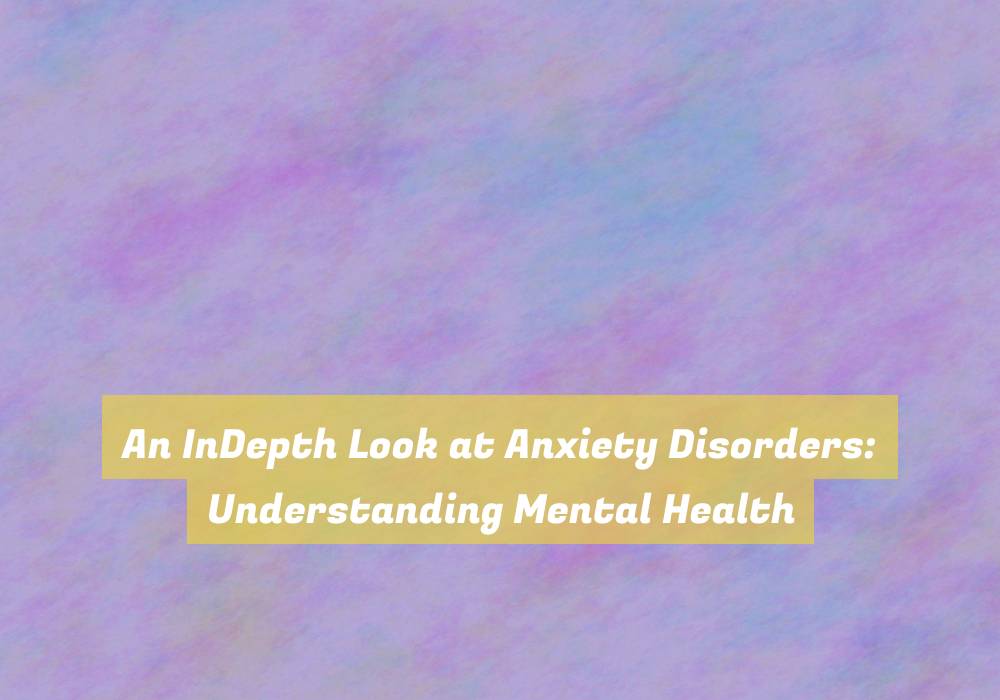An InDepth Look at Anxiety Disorders: Understanding Mental Health
Picture this: itG??s a bright, sunny day, and the world around you is bustling with activity. But despite the outward serenity, inside, you feel a mounting sense of unease, a tightness in your chest, and a relentless worry that seems to have no clear source.
Anxiety disorders can be like a storm raging within, affecting millions of individuals in various ways. What if you could gain a deeper understanding of these complex mental health conditions and the impact they have on those who experience them?
Types of Anxiety Disorders
Understanding the various types of anxiety disorders can be essential for recognizing the different ways that anxiety may manifest in individuals.
One common type is generalized anxiety disorder (GAD), where you may experience excessive worry and fear about everyday situations. This can lead to physical symptoms such as restlessness, difficulty concentrating, and muscle tension.
Another type is panic disorder, characterized by unexpected and repeated episodes of intense fear that can lead to physical symptoms like chest pain, heart palpitations, and shortness of breath.
Social anxiety disorder involves overwhelming worry and self-consciousness about everyday social situations, while specific phobias are intense fears of specific objects or situations, such as heights, spiders, or flying.
Additionally, thereG??s also separation anxiety disorder, which typically begins in childhood and involves excessive fear or anxiety about separation from loved ones.
Understanding these different types of anxiety disorders can help you and others recognize the symptoms and seek appropriate support and treatment.
Symptoms and Diagnostic Criteria
Recognizing the various types of anxiety disorders can lay the groundwork for understanding the specific symptoms and diagnostic criteria associated with each.
Generalized Anxiety Disorder (GAD) typically involves excessive worry and anxiety about various aspects of life, often accompanied by physical symptoms such as restlessness, irritability, muscle tension, and difficulty concentrating.
Panic Disorder is characterized by recurring panic attacks, which are sudden and intense periods of fear or discomfort, often accompanied by physical symptoms like rapid heartbeat, sweating, trembling, and shortness of breath.
Social Anxiety Disorder involves an intense fear of social situations and scrutiny by others, leading to avoidance of social interactions and physical symptoms such as blushing, sweating, trembling, and nausea.
Specific Phobias are characterized by an intense and irrational fear of a specific object or situation, leading to avoidance and severe anxiety when facing the phobia.
Lastly, Obsessive-Compulsive Disorder (OCD) involves intrusive, unwanted thoughts and repetitive behaviors or mental acts aimed at reducing anxiety.
Understanding these specific symptoms and diagnostic criteria can aid in identifying and addressing anxiety disorders effectively.
Impact on Daily Functioning
Experiencing an anxiety disorder can significantly disrupt your daily functioning, affecting your ability to work, socialize, and perform everyday tasks. The constant worry and fear can make it challenging to focus on your job, leading to decreased productivity and potential conflicts with colleagues.
Simple activities such as going to the grocery store or attending social gatherings may become overwhelming, causing you to withdraw from social interactions. This isolation can further exacerbate feelings of loneliness and contribute to a cycle of anxiety.
Additionally, the physical symptoms of anxiety, such as muscle tension and fatigue, can make it difficult to muster the energy to complete routine chores or engage in hobbies you once enjoyed.
As a result, anxiety disorders can have a profound impact on your overall quality of life, affecting your relationships, career, and sense of well-being. Seeking professional help and adopting coping strategies can be crucial in managing the effects of anxiety on your daily functioning and reclaiming a sense of control.
Stigma and Support
The challenges of daily functioning due to anxiety disorders can be further compounded by the stigma surrounding mental health, impacting the support individuals receive. When others stigmatize mental health conditions, it can lead to feelings of shame and isolation, making it harder for those with anxiety disorders to seek help. This stigma may also affect how friends, family, and even healthcare professionals perceive and interact with individuals struggling with anxiety disorders. As a result, it can be challenging to find the understanding and support needed to manage the symptoms effectively.
However, itG??s important to remember that support is available. Many individuals and organizations are working to break down the stigma surrounding mental health and create safe spaces for those affected by anxiety disorders. Seeking support from mental health professionals, support groups, and trusted individuals can provide a sense of validation and understanding. By reaching out for help, you can begin to build a support network that acknowledges the real challenges of living with anxiety disorders and offers the assistance needed to navigate through them.
Conclusion
In conclusion, understanding anxiety disorders is essential for promoting mental health awareness and providing support to those affected. By recognizing the different types of anxiety disorders, their symptoms, and their impact on daily functioning, we can work towards reducing the stigma surrounding mental health issues.
ItG??s important to offer support and understanding to individuals living with anxiety disorders, and to continue advocating for better access to mental health resources. Together, we can create a more inclusive and supportive environment for everyone.






